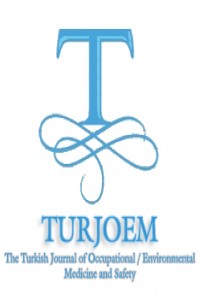ANALYTICAL METHODS FOR THE DETECTION OF PERSISTENT ORGANIC POLLUTANTS IN COMPLEX ENVIRONMENTAL SAMPLES
Abstract
Persistent
organic pollutants (POPs) are defined as the most hazardous chemicals due to
their low water solubility, high lipophilicity, resistance to biodegradation,
toxic effects and bioaccumulation properties. Stockholm Convention as an
international environmental treaty, became effective for the ban or restriction
of the use of POPs. Consequently,
monitoring and risk assessment of these chemicals have become a global concern
and received great importance. Prioritized pollutants including POPs are
monitored routinely from environmental samples regardless the restricted
resources. Measurement of pollutants in environment are laborious, expensive
and usually contains more than one procedure. Moreover, these analyses were
frequently advanced aiming one class of contaminants, consequently cannot
correspond the demand of monitoring multiple pollutants at the same time from
the environmental samples. The precise analysis of POPs requires selective and
sensitive methods. The conventional extraction methods generally start with a
homogenization step, followed by one or more steps of purification to remove
coextracted interferences before instrumental analysis. For satisfactory
purification of sample extracts, the choice of an appropriate adsorbent and
eluent solution is important and depends mainly on the chemical properties of
the target analytes as well as the sample matrix. Several interlaboratory
comparison studies and proficiency testing programs are in place throughout the
world. Nevertheless, there are imminent challenges in accurate and precise
analysis of POPs in complex environmental matrices. This presentation will
provide a brief and systematic description of the methods for the measurement
of POPs in complex sample matrices, with the emphasis on analytical methods.
References
- Ayhan FILAZI, Begum YURDAKOK-DIKMEN Department of Pharmacology and Toxicology, Faculty of Veterinary Medicine, Ankara University, Turkey.
Abstract
References
- Ayhan FILAZI, Begum YURDAKOK-DIKMEN Department of Pharmacology and Toxicology, Faculty of Veterinary Medicine, Ankara University, Turkey.
Details
| Journal Section | Articles |
|---|---|
| Authors | |
| Publication Date | February 16, 2017 |
| Published in Issue | Year 2017 Volume: Volume 2 Issue: İssue 1 (1) - 2.İnternational Congress Of Forensic Toxicology |


